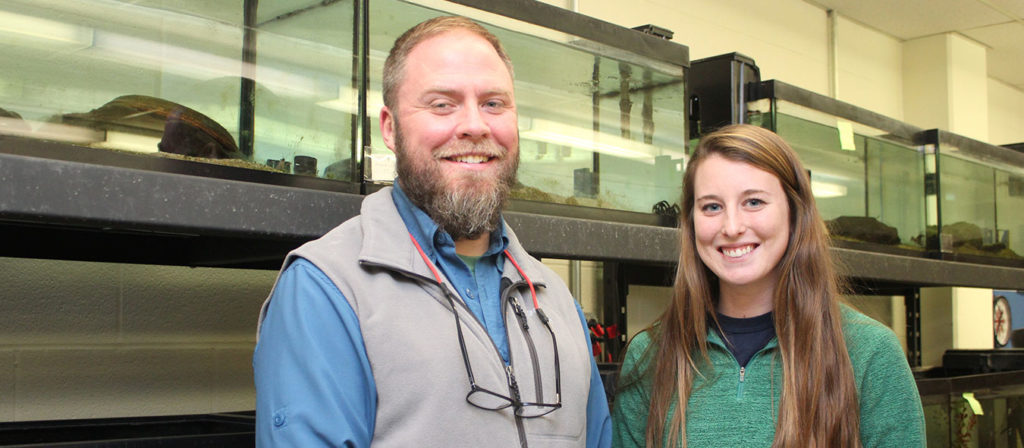West Liberty University now has a unique honor thanks to some of its students and alumni from the College of Sciences.
The distinction is in the form of a crustacean, named after WLU professor Dr. Zachary Loughman.
“It’s awesome that I have a crayfish named after me! It’s an all blue burrowing species that only occurs in West Virginia,” Loughman said.
Two former students David Foltz and Greg Myers, current WLU graduate student Nicole Sadecky, as well as Loughman’s professional colleagues from Dennison University and the Carnegie Museum of Natural History, along with his mentors from the United States Geological survey in Morgantown and Midwestern Biodiversity Institute, played a part in publishing the scientific paper describing the new species of crayfish.
“The best part of this honor is that it was due to the scientific work of former and current West Liberty University students that led the charge and were mentored by my own crayfish biology mentors; it really was a joint effort,” he said.
“This published manuscript is a product of the Hilltop that we all call home, and that’s what makes it so special,” said Loughman added.
An associate professor of Biology Zoology and Ecology, Loughman also serves as the Zoo Science and Applied Conservation Coordinator in the Department of Natural Sciences and Mathematics where he is graduate advisor to 11 biology graduate students. He is internationally known for his work with crayfish and maintains an active lab that completes research both on campus and in the field across the eastern United States.
The new crayfish study was published in the most recent issue of the “Journal of Natural History,” one of the oldest journals in biology, which was established in 1841.
“Darwin actually published in this journal. Natural History has always been our strong suit ecologically here at West Liberty, and while many universities have turned away from natural history, our organismal majors embrace it, and we now are producing graduates that have reputations for incredibly strong foundations in natural history,” he said.
According to the study’s abstract: “The new species of crayfish, Cambarus loughmani sp. nov., is described from the preglacial Teays River Valley of Cabell, Kanawha, Lincoln, Mason, and Putnam counties, West Virginia. The species was previously considered to be part of the Cambarus dubius complex.”
All species descriptions have a section in the paper where the authors justify the latin name called the etymology section. The etymology section of this paper reads:
“The authors of the scientific paper name this crayfish in honor of Dr. Zachary J. Loughman. In recent years, prior to the naming of this species, he has served as one of the primary astacological researchers, contributing greatly to our understanding of ecology, taxonomy, conservation and distribution of Appalachian crayfish species.”
“Our students and my colleagues are the reason this species is known to science now! Specific to the students, I am very proud of them and thank them for this honor,” Loughman said.
Also active in the publication and research were Ohio State graduate student Mael Glon, and crayfish scientists Jim Fetzner and Whitney Stocker and two of Dr. Loughman’s professional mentors, Stuart Wesh and Roger Thoma. To read the entire study, please click here.
Originally from Maureen Zambito for West Liberty University News.
